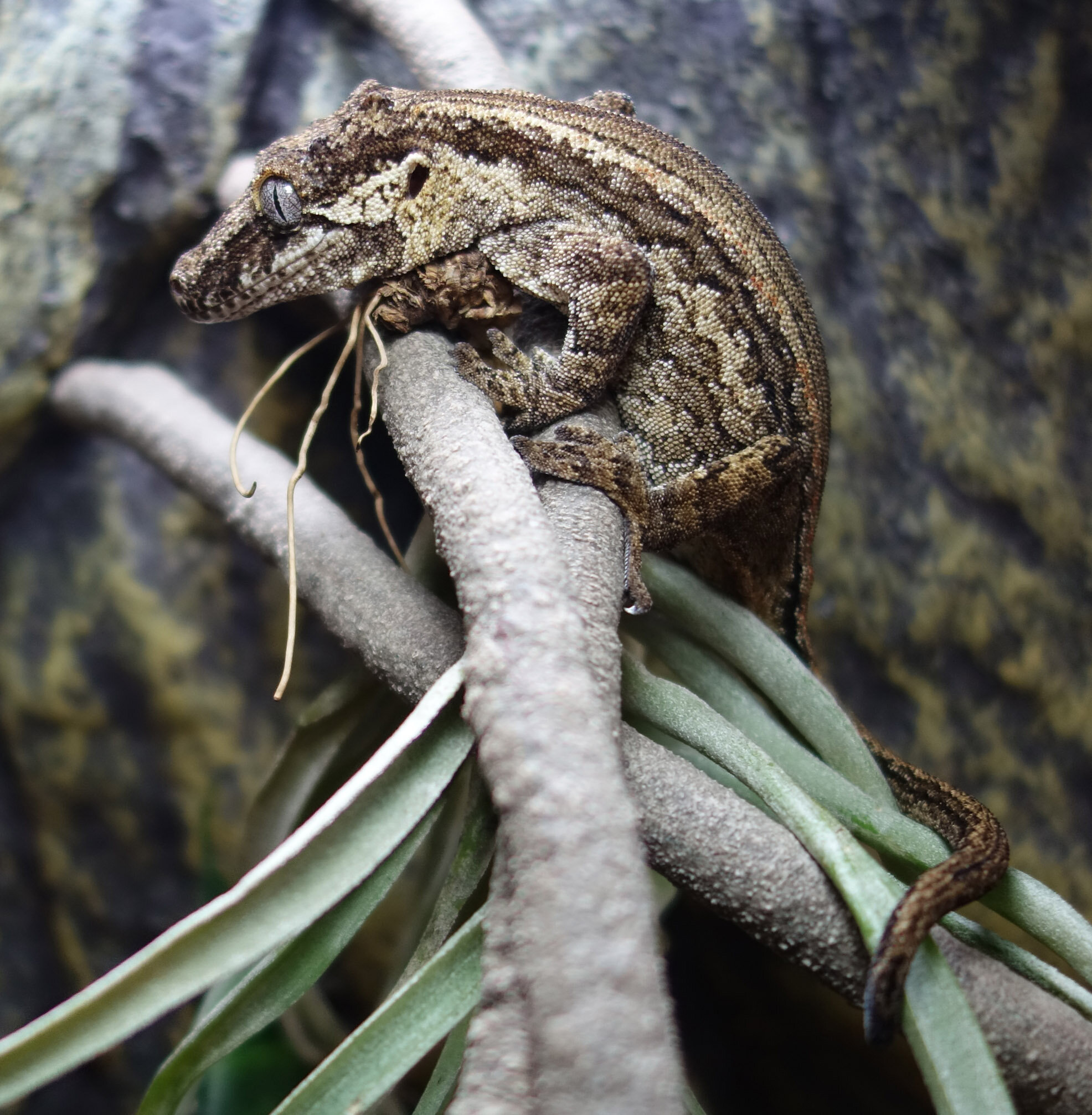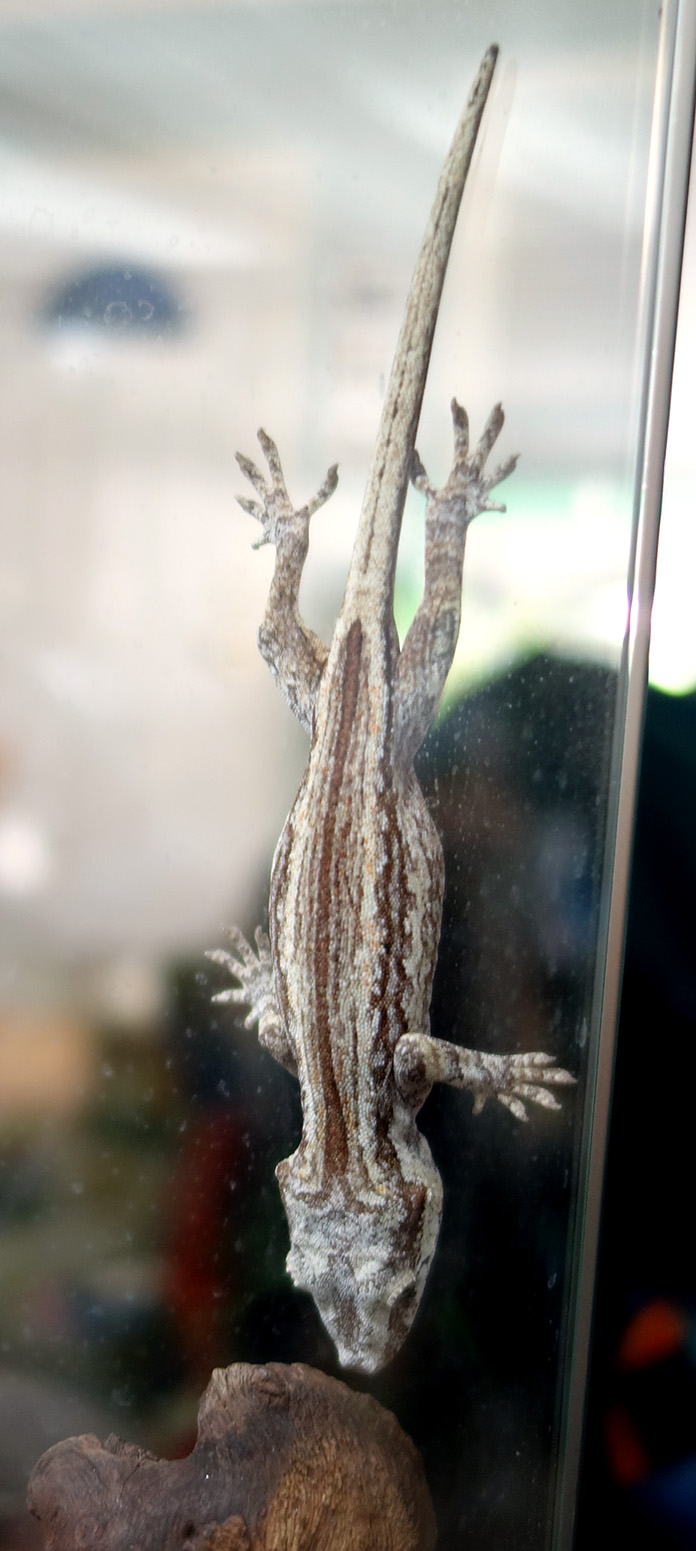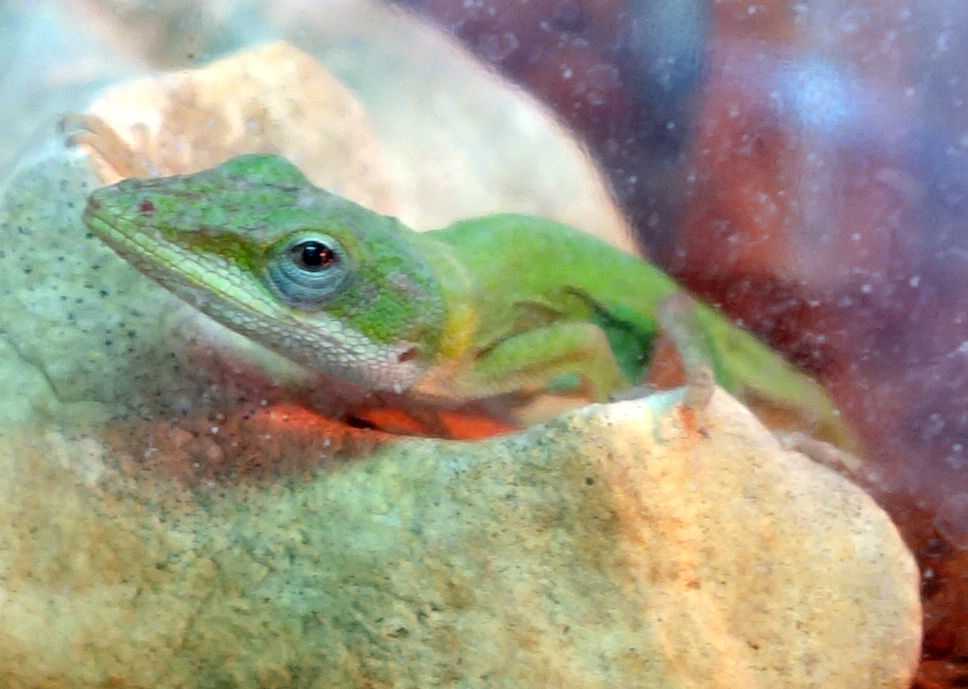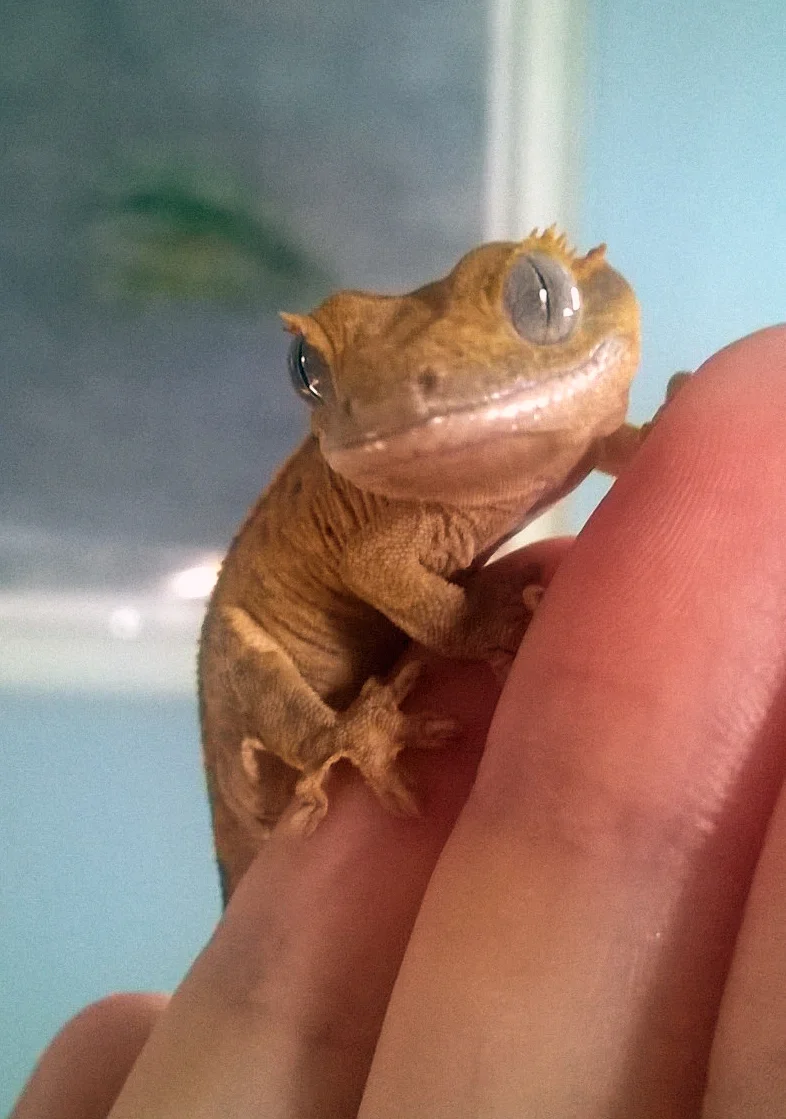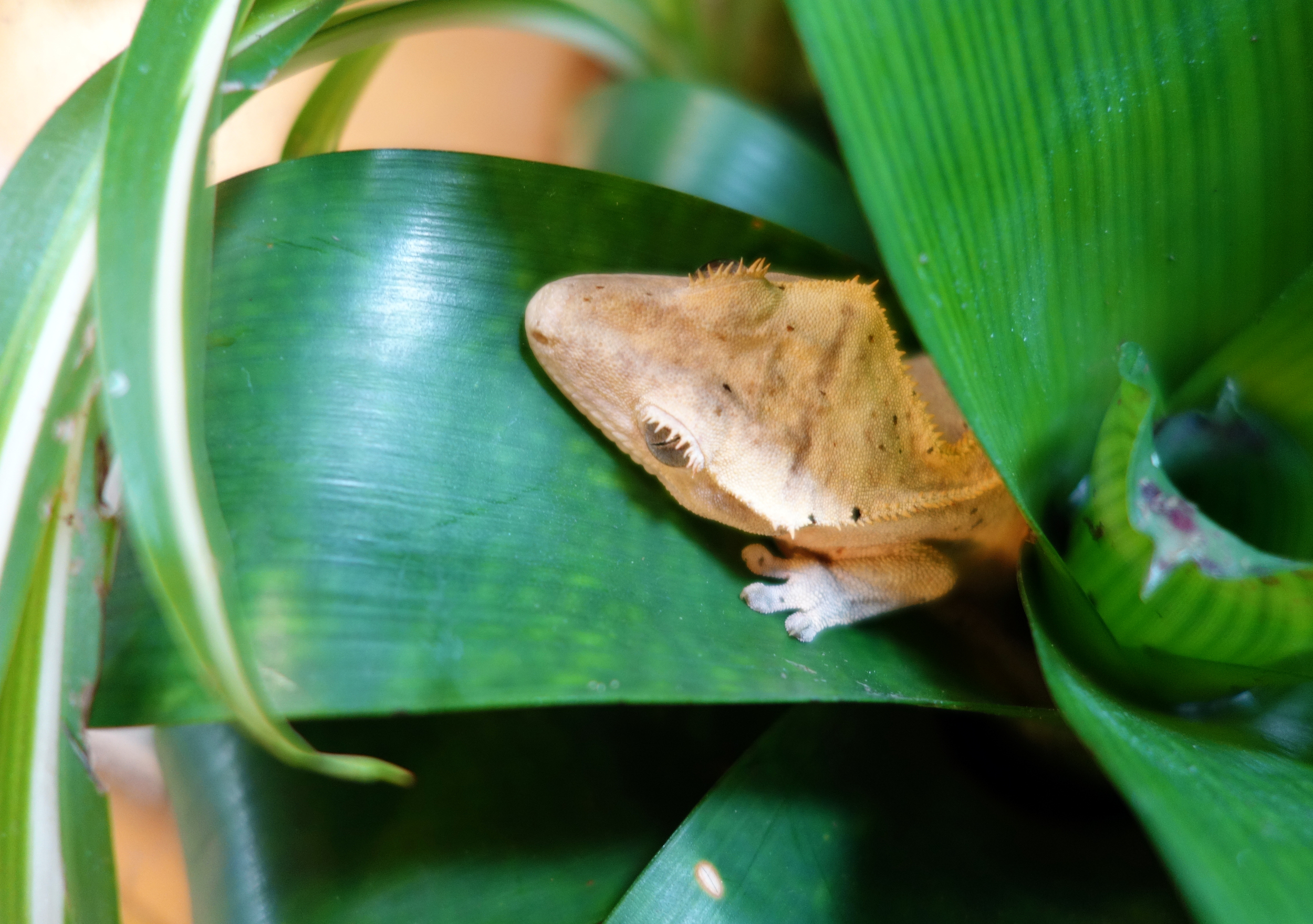I haven’t updated you on Ashlar - my pet gargoyle gecko - in a while, but she’s doing very well! Ash is a little over three years old, has a strong preference for the Fig & Insects Pangea Gecko Diet, changes color regularly, and makes full use of her vivarium. Here are a few new photos of her!
pets
Ashlar the Adorable
I haven’t updated you on my pet gargoyle gecko Ashlar in a while - she’s doing very well, and has even redecorated her cage recently by moving the vine supports around!
Ashlar and a Blooming Sinningia Cardinalis
Here are a couple recent photos from fauna and flora in my life!
Graceful Gargoyle Gecko
Just look at this poetic moment between Ashlar and her reflection!
My New Pet: Ashlar, or Ash for Short
When my crested gecko Lex passed away this winter, I was immediately surprised by how much lonelier my house felt. It was genuinely surprising how much companionship I felt from Lex’s presence. I didn’t want to replace her, exactly, but I wanted another pet. I like a wide range of pets including cats and dogs, but I feel my current household situation is best suited for a low maintenance and quiet pet that won’t be heartbroken when I travel for artist residencies.
In the intervening years since I got Lex, I had gradually become interested in a similar species of gecko called a gargoyle gecko that’s native to the same island as crested geckos (New Calendonia). The two species are similar in a lot of ways - size, diet, temperature needs, space needs, etc. - but differ in a few key ways. Gargoyle geckos will regrow their tails if they autotomize (meaning intentionally sever their tails) whereas crested geckos won’t. The two species also have different coloration and head shape and detailing. Gargoyles are so named because they have little bumps that develop on their heads and have sharp teeth.
I decided to get a gargoyle gecko for my next pet. They are more difficult to find than crested geckos, but fortunately for me there were a few for sale from a home breeder in nearby Lawrence, KS, on Craigslist. I consulted with the seller and then arranged to pick up my new pet a few days later.
I picked up the new little one and learned that it had hatched on July 28th. You can’t determine the sex (unless you’re really skilled and have a magnification device called a loupe) until the gecko is a lot older, so I’m currently changing the pronouns back and forth at random. After I’d had him for a few days, I decided the name Ashlar was suitable - ashlar is the most finely dressed masonry, but as a name also can be shortened to Ash which also represents the tree and cinder; all three are very apropos of various color states of my new gecko. I bought Ash a new cage just in case Lex’s had a parasite or fungal infestation (though I doubt that it does, and also heavily sanitized and temperature-treated the old cage through freezing just to be totally sure) and new cage decor and plants as well.
All that being said, please meet Ash! While I know it might be hard to believe, all of the photos in the below slideshow are of just one adorable gecko who is very variable in color depending on mood, surroundings, and time of day.
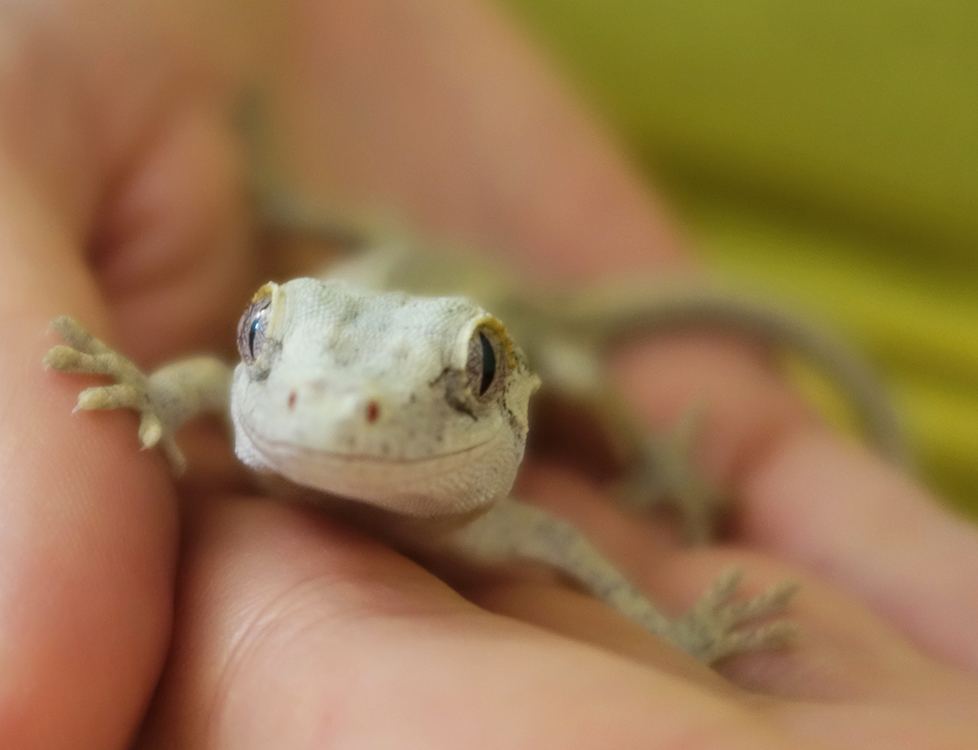
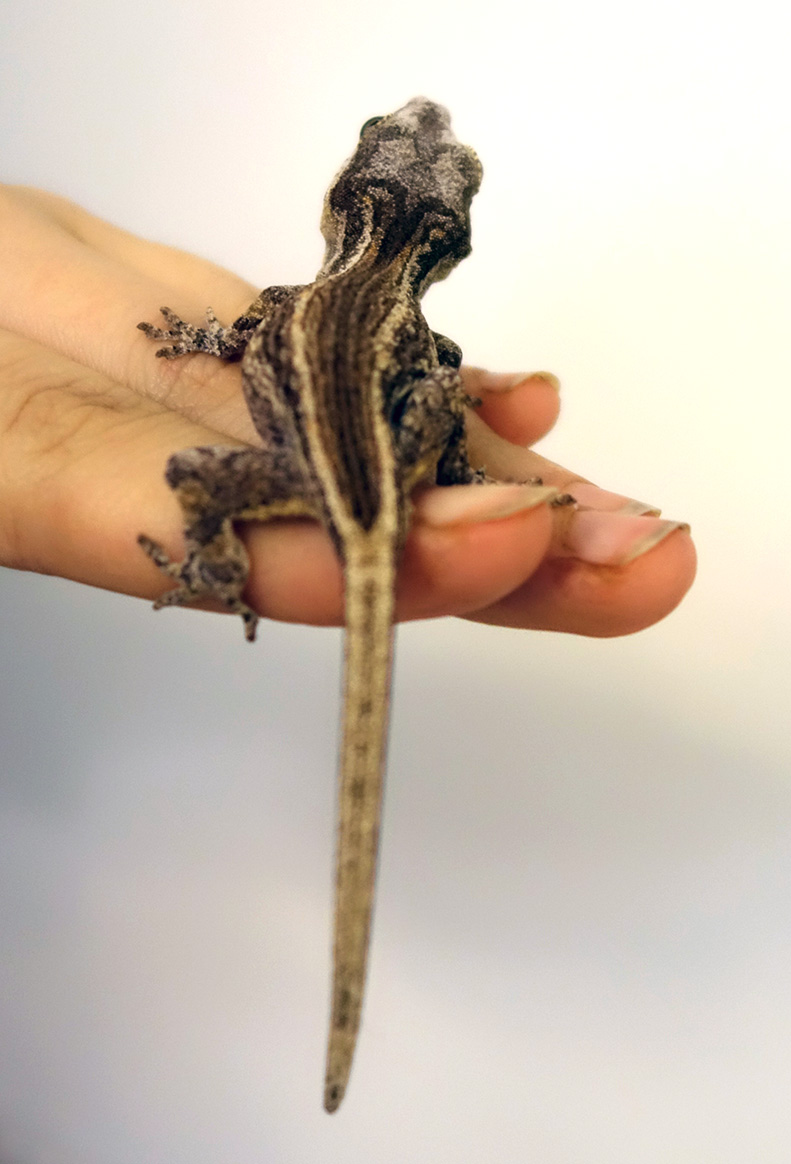
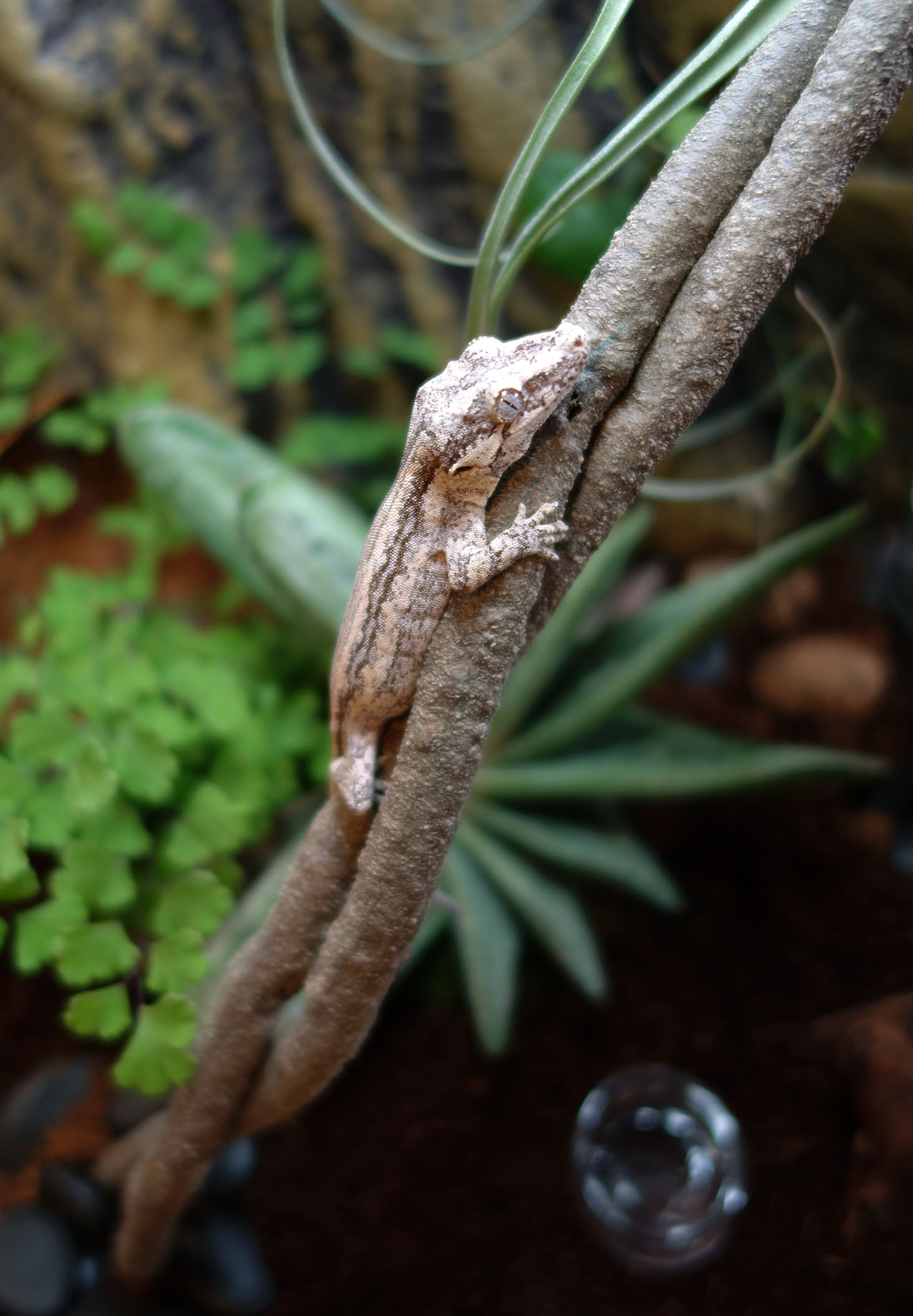
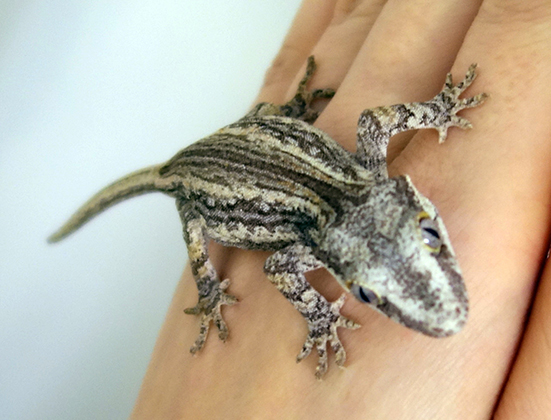
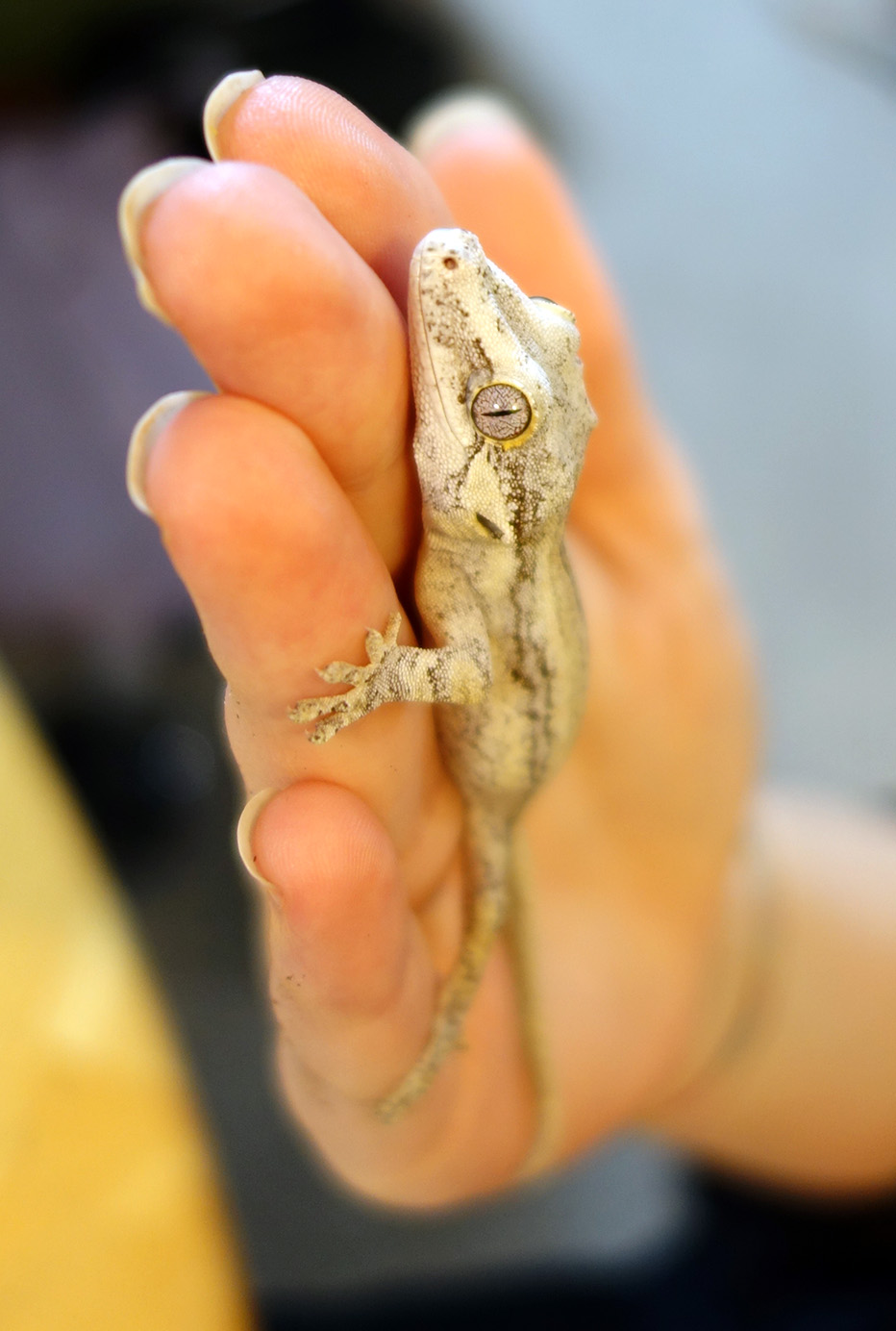

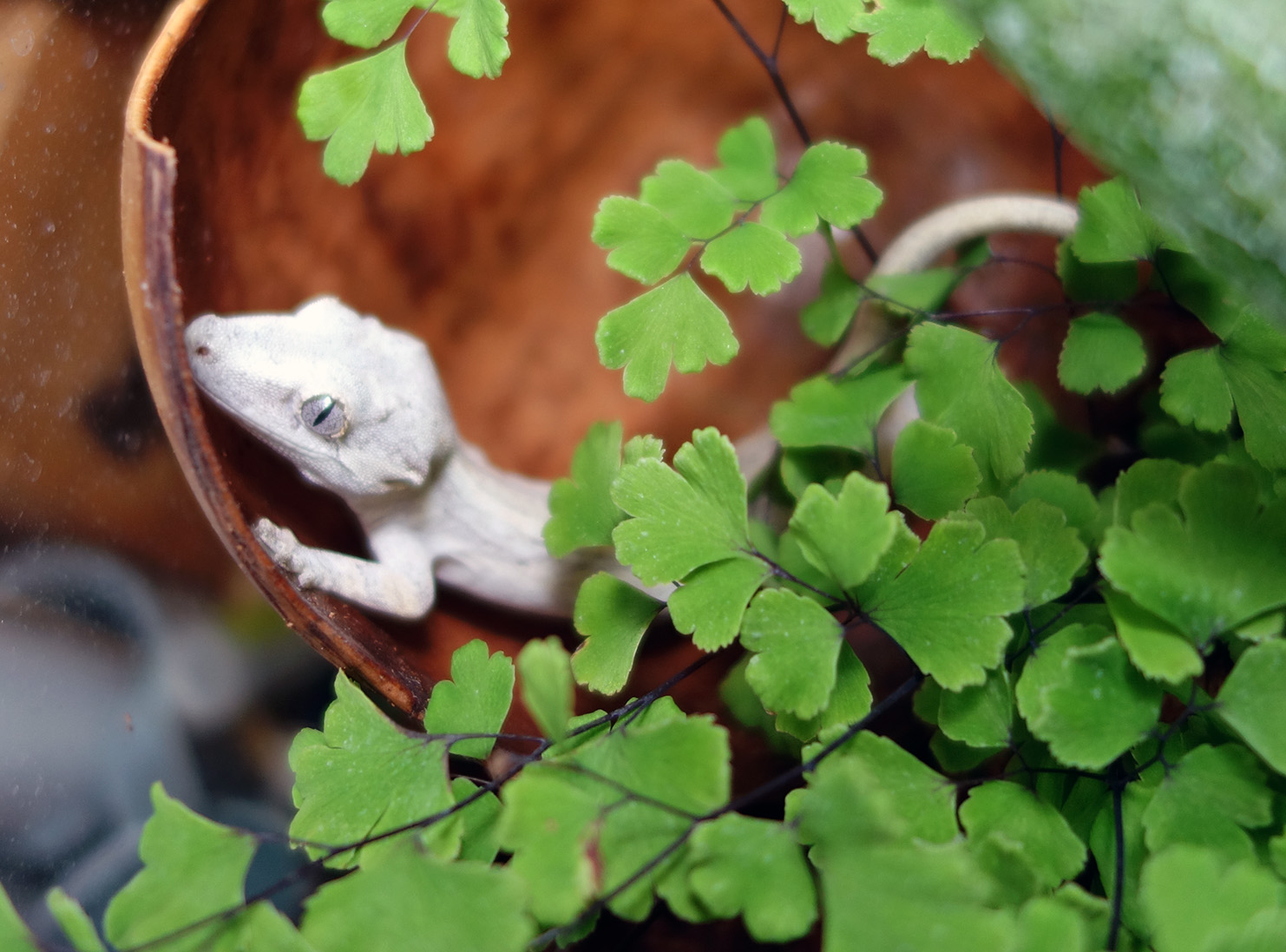
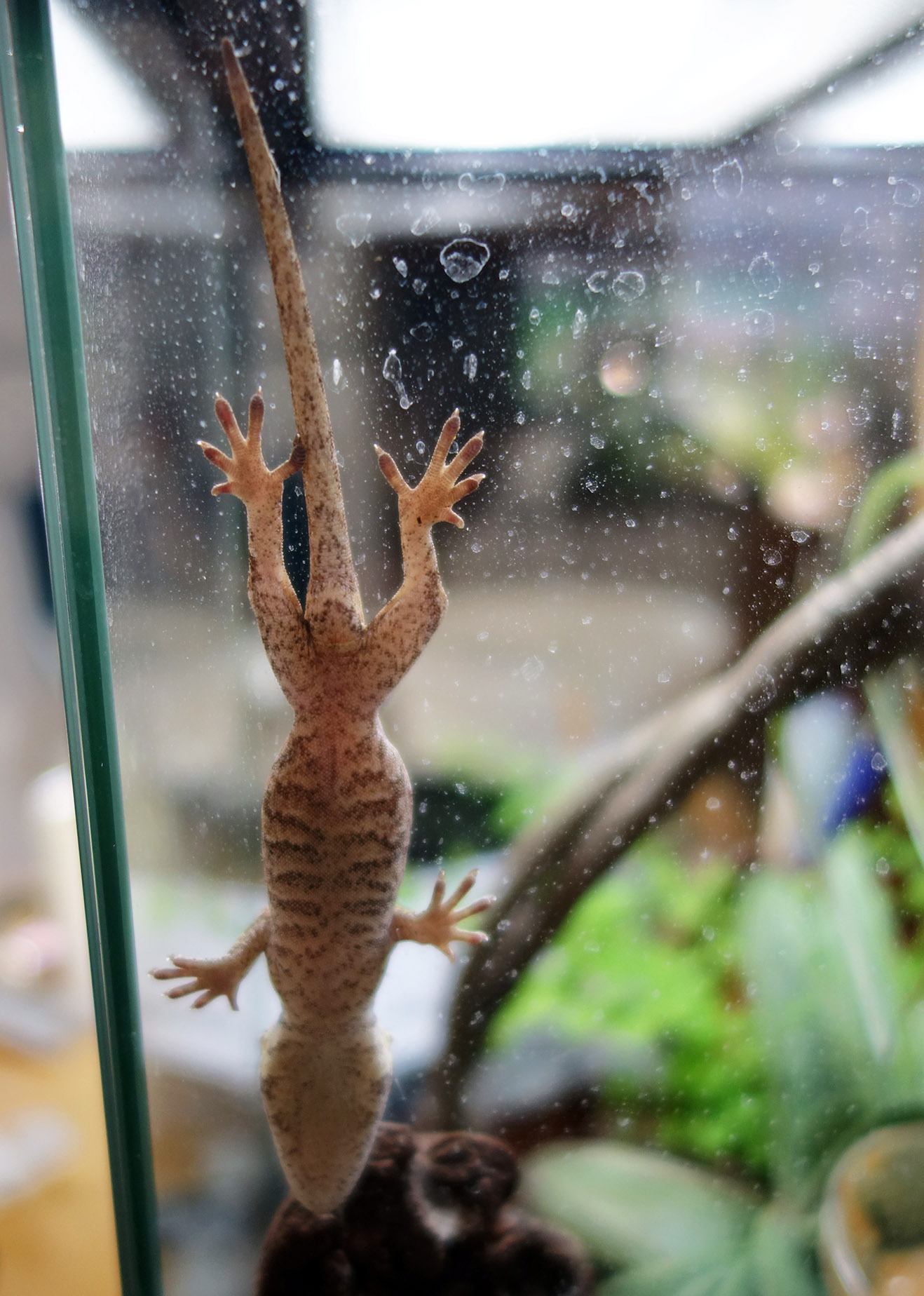
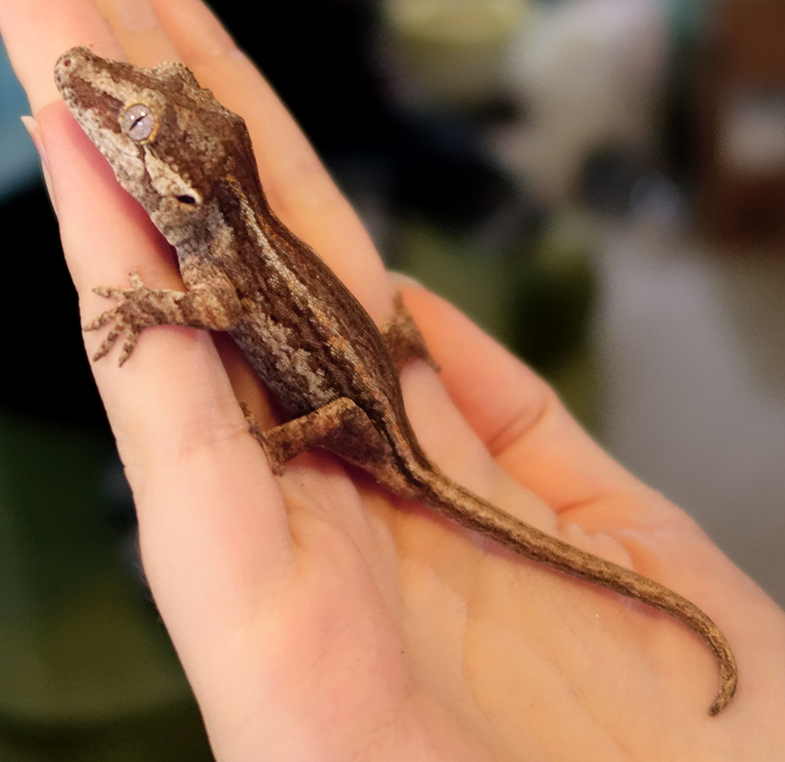
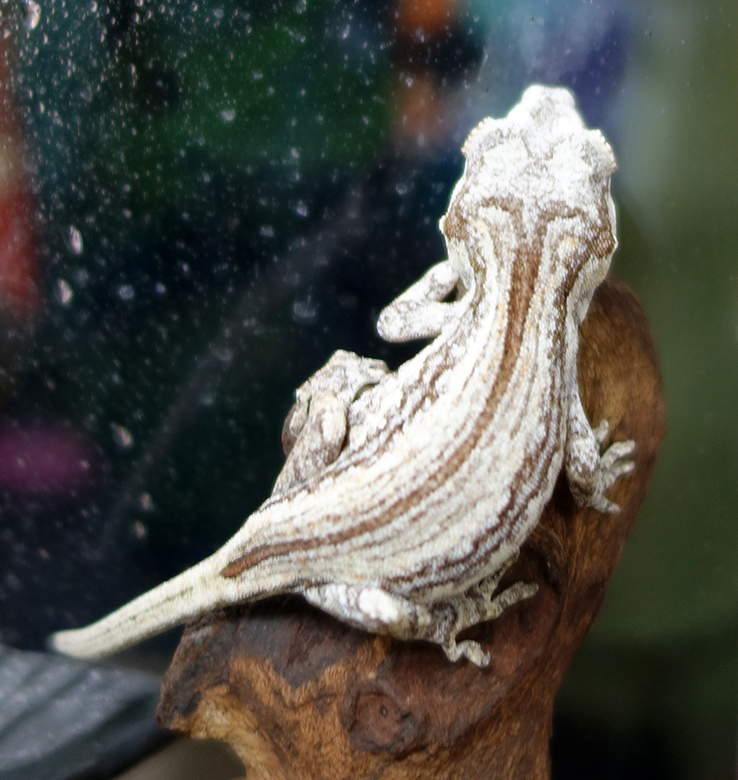
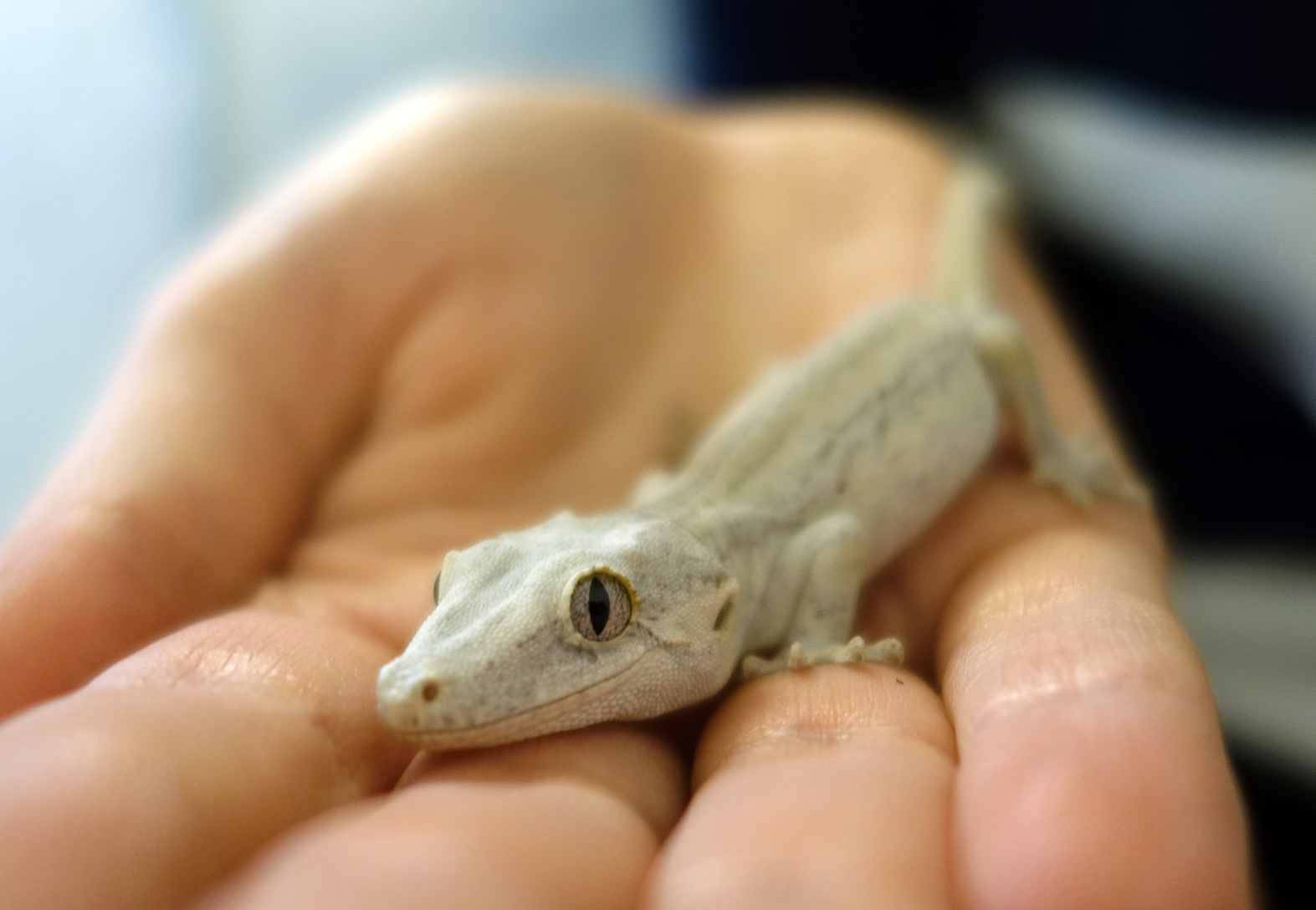
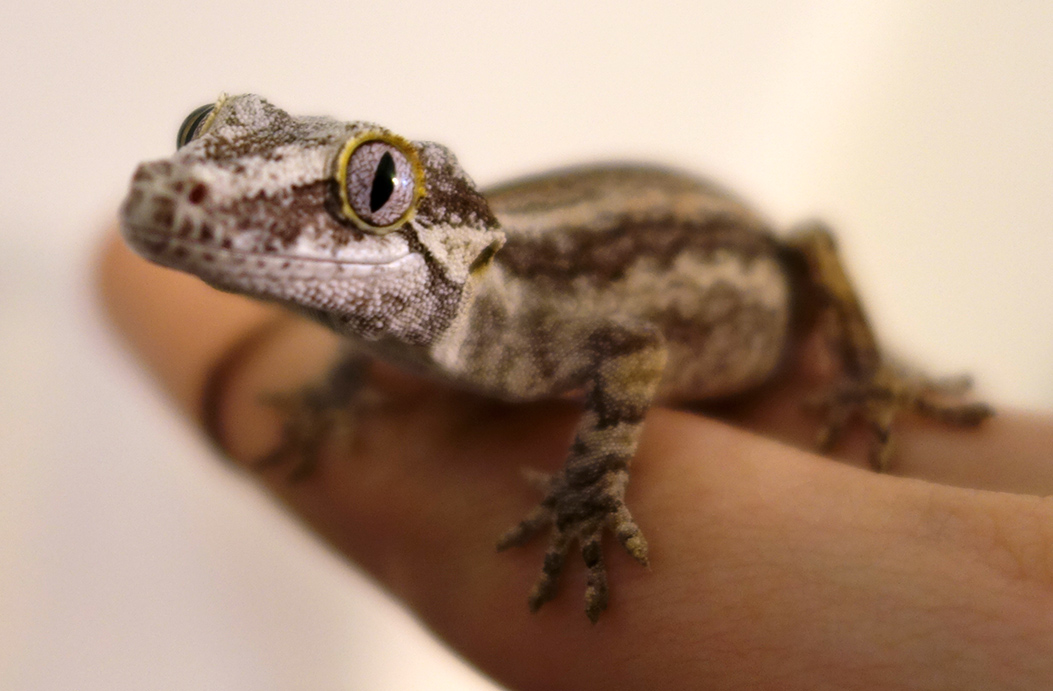
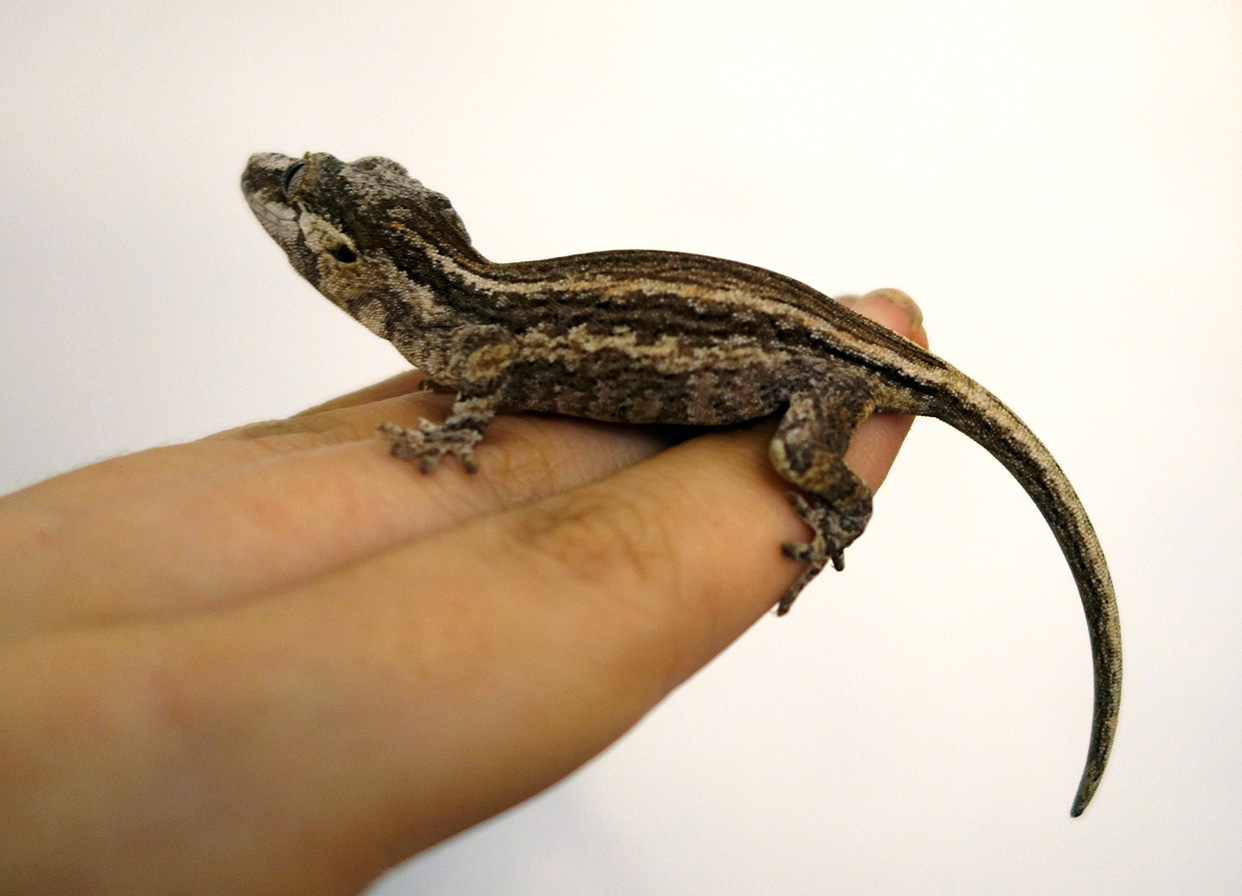
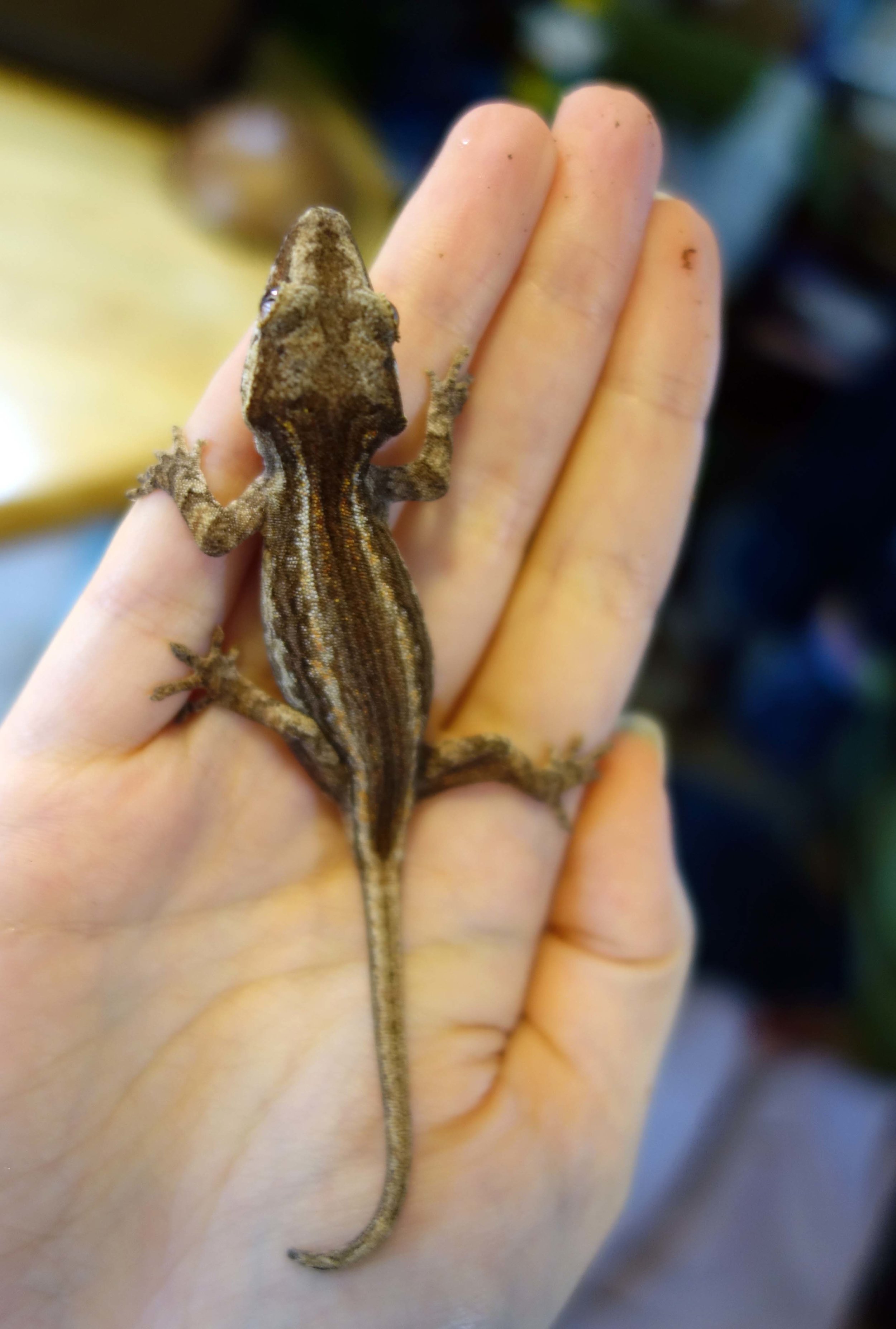
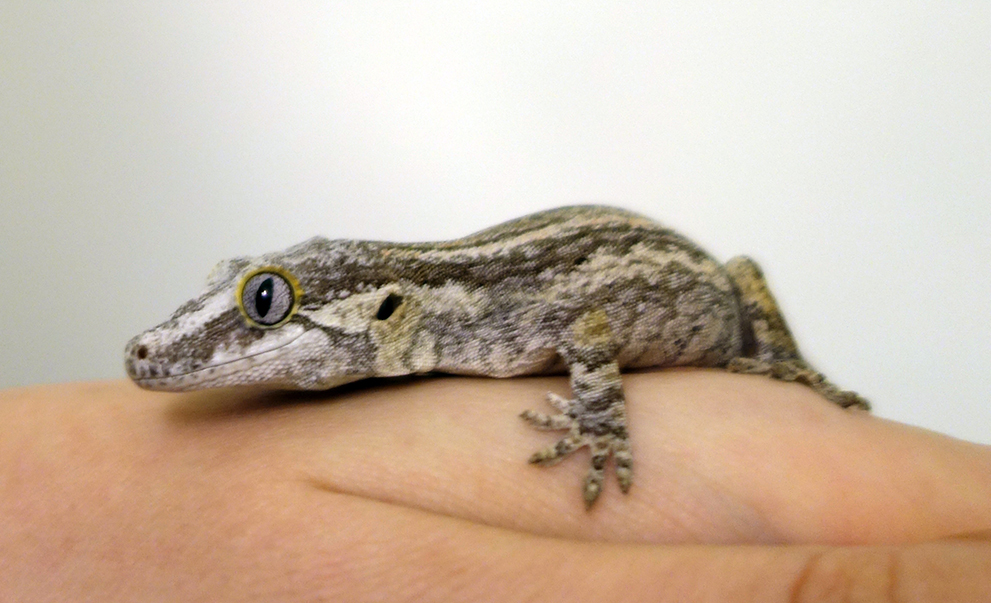
My Final Lex Post
For those of you who have been frequent blog visitors or Twitter followers, you’ll know that I occasionally post about my pet crested gecko Lex. Sadly, she passed away this winter. She was only six years old, which is quite young for a crested gecko to die. The species often lives for fifteen to twenty years in captivity and sometimes even longer. In hindsight, I believe she probably got impacted, though at the time I thought she was just going through a bad shed cycle. Impaction is always a small risk when you’re keeping the animal in a planted vivarium and feeding live insects. These choices nevertheless enrich an animal’s life, too, and Lex got clear enjoyment out of the plants and insect feeders. In the end I think it was unfortunately just her time.
Lex was a great gecko and I was really sorry to lose her. Here are some photos I hadn’t yet posted that I’d like to share in celebration of her life with me.
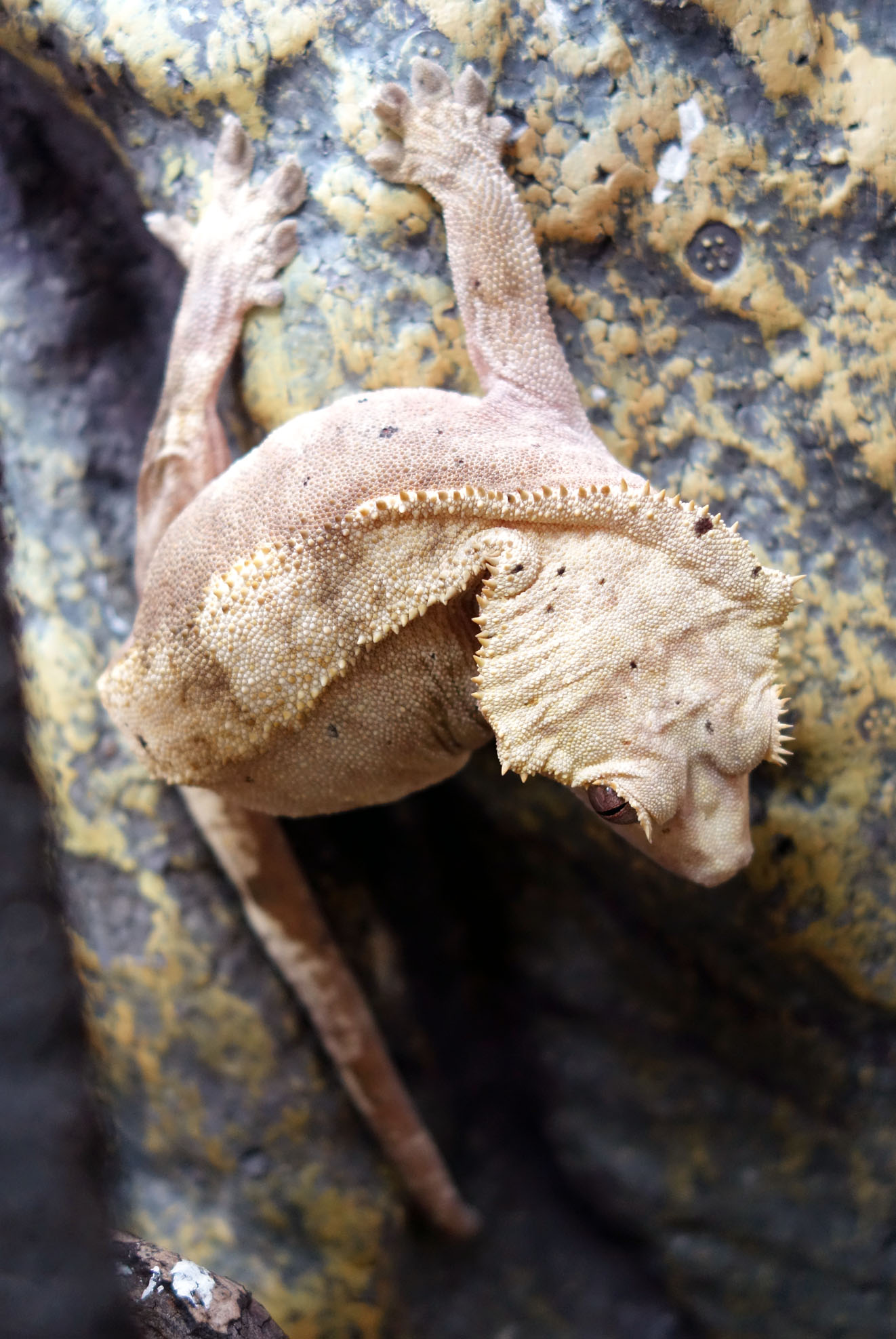
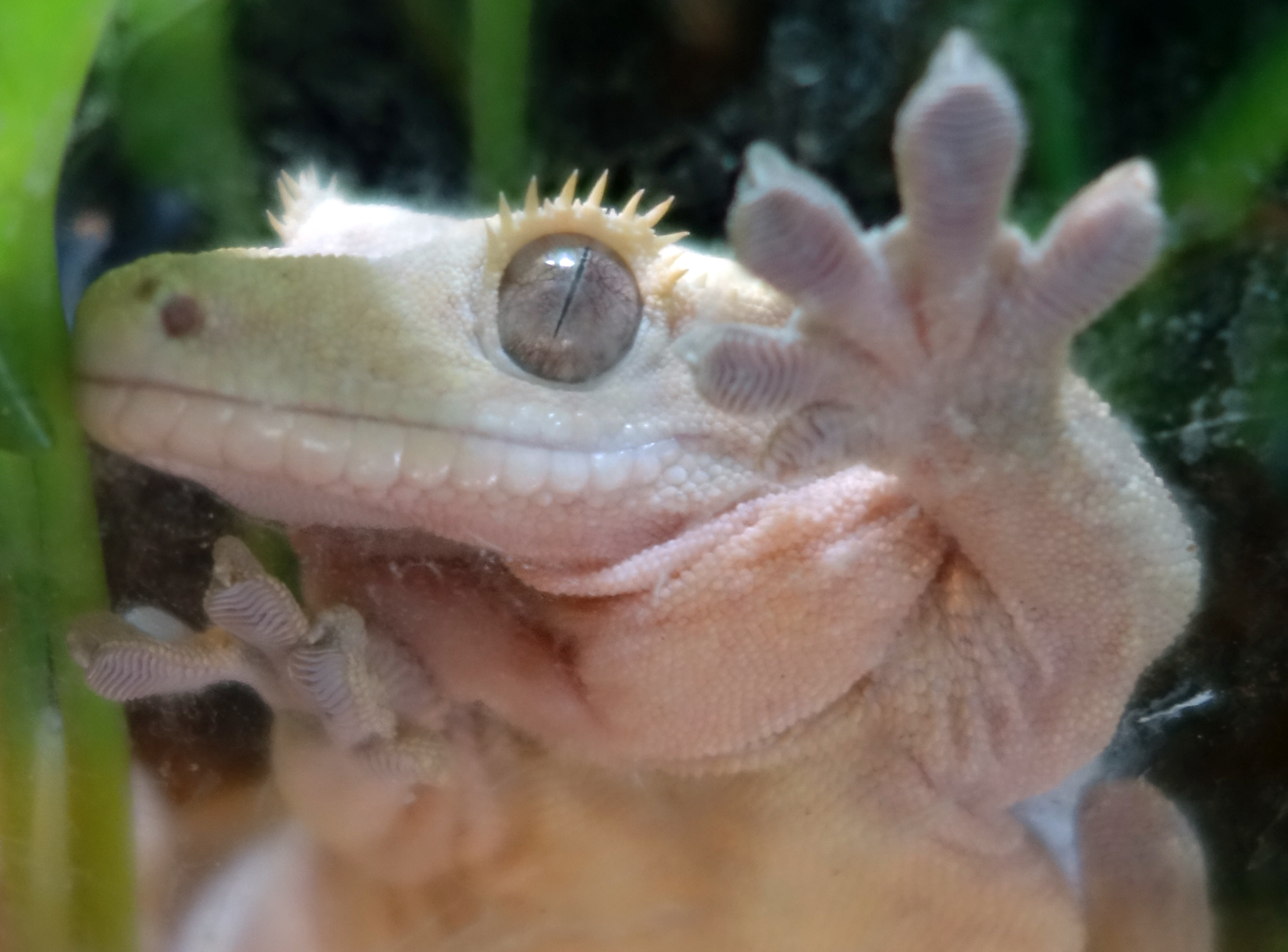
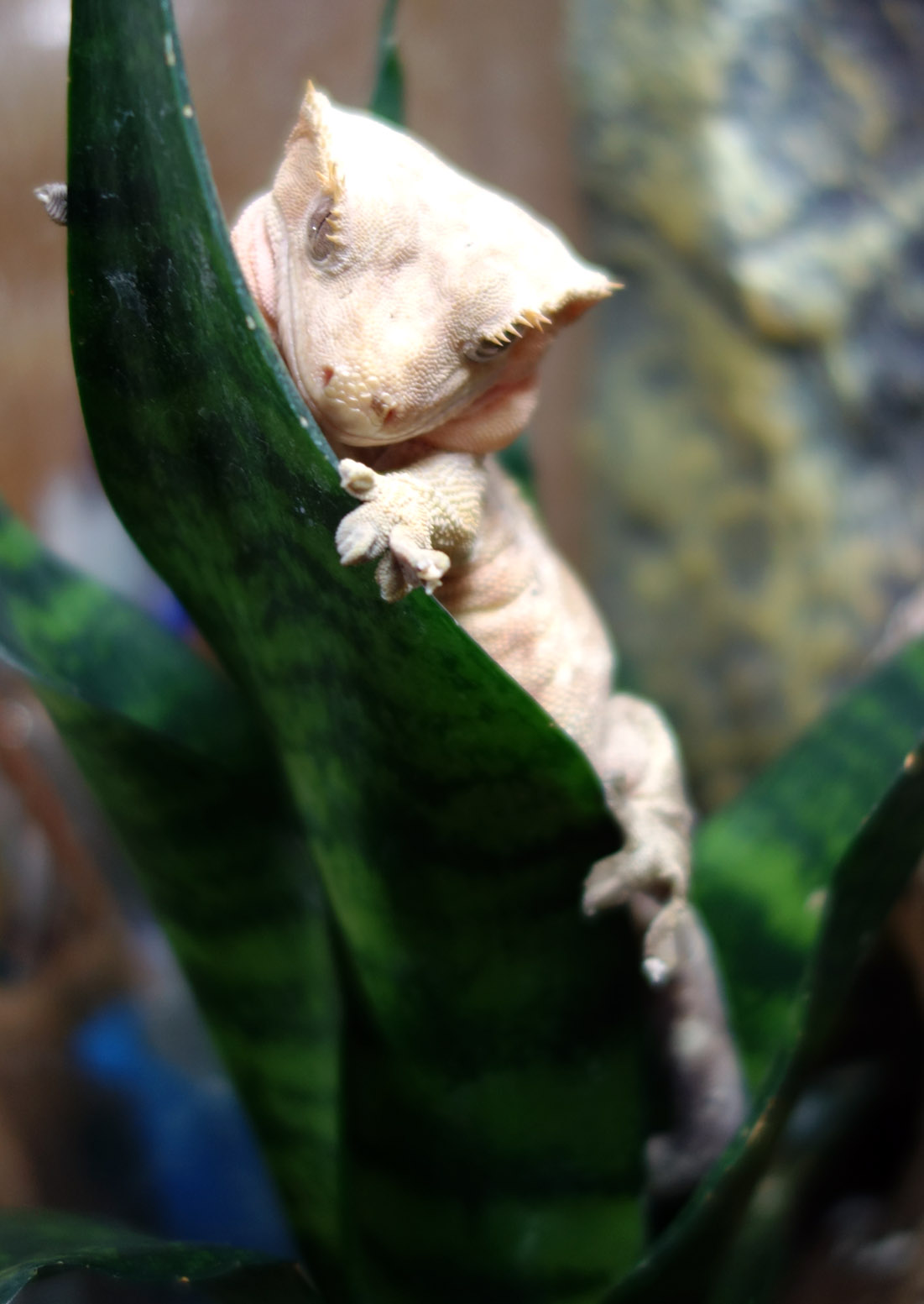
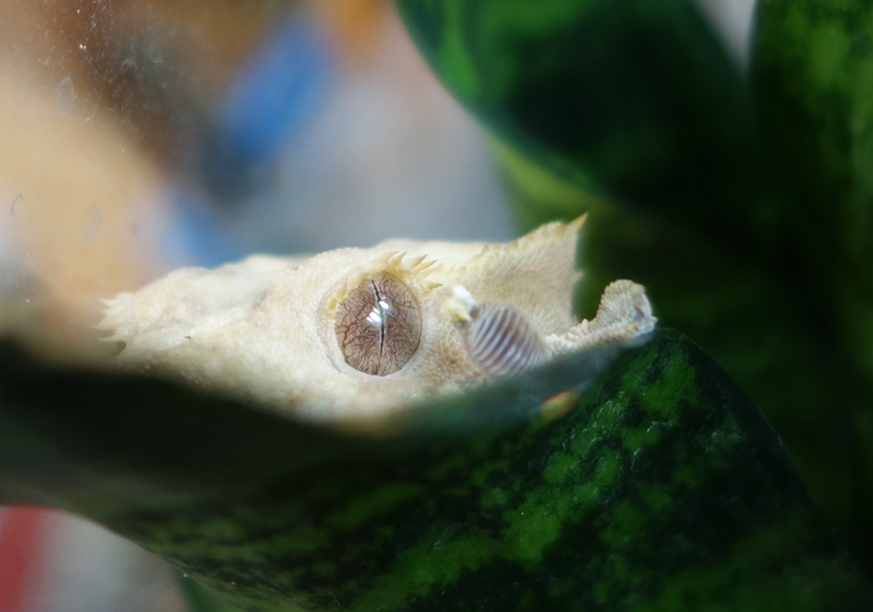
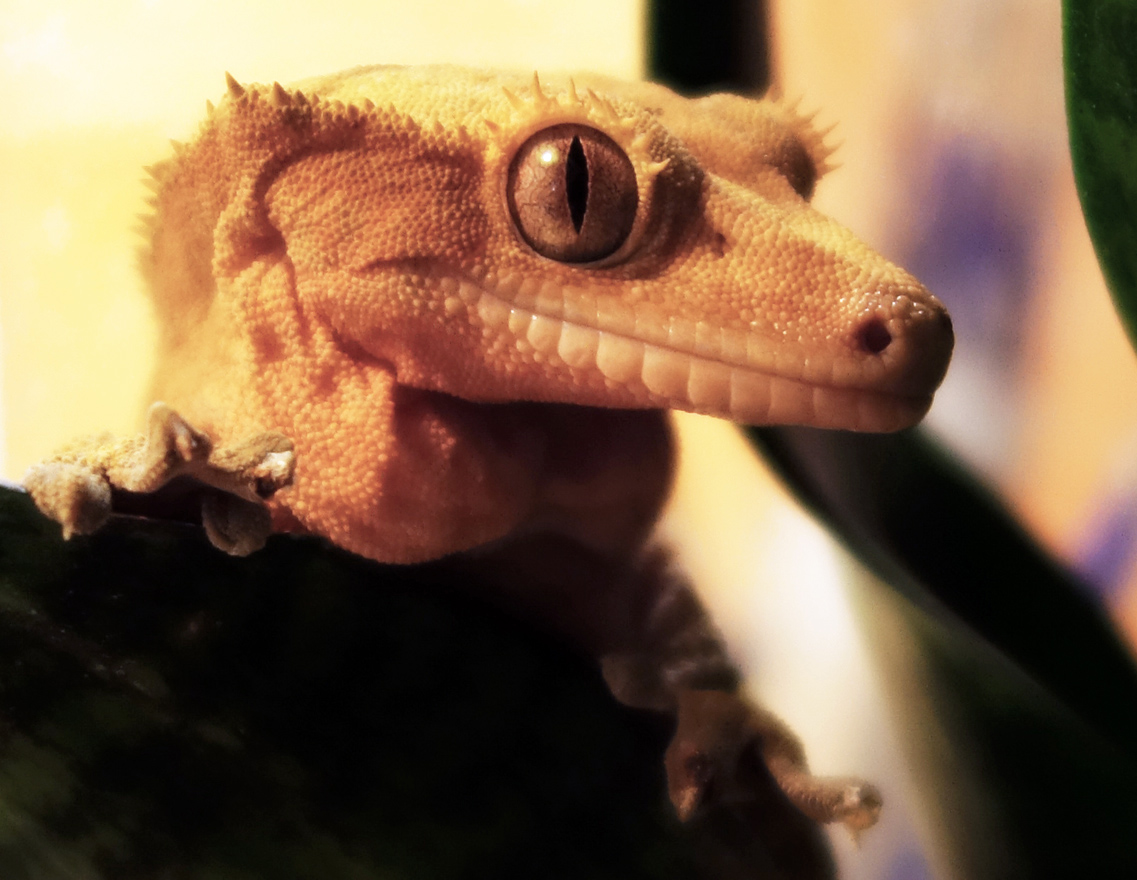
The Sexiest Gecko
My crested gecko Lex cracks me up. I woke up to this one morning. Tell me this isn’t the most alluring pose you’ve ever seen a gecko perform. For maximum effect, turn on “Bootylicious” by Destiny’s Child while looking at this photo (I included an embed of the song via YouTube below).
Bat Lex
Sometimes Lex likes to pretend she's a bat.
Lex Peeking and Plotting
My crested gecko Lex is still just as cute as ever! Here she is, looking rather mischievous while holding onto a pothos vine at the bottom of her cage.
Intercambiador ACART Residency Journal 4
Some random observations:
1) I am quite tall for the Iberian Peninsula (both Portugal and Spain). Headrests on buses and cars hit me in the back and I tower over pretty much all of the women and many of the men. I'm only very slightly taller than average (5'6" with average being 5'5" for women) in the USA, so it's weird feeling so very tall.
2) Madrid is a dog city. I noted that when I was here in 2007, too, and I love seeing all the dogs. I get to pet and play with a few particularly friendly ones, too, and that's grand. I do wish it was less of a dog poop city, though. Many people do pick up their dog's poop with little baggies and toss it away appropriately, but many also do not.
3) Travelers' diarrhea is really unpleasant. I kept getting it here the first few weeks and can't figure out what the precise culprit is. I feel that since I lived here once before (admittedly ten years ago) it is wholly unfair that it keeps happening (three separate occasions thus far).
4) Madrid is getting ever so slightly better with vegetarianism, but it's still very hard to be vegetarian here if you want to eat out.
5) Despite having lived here before and this being the case in other cities I've done residencies in as well, I'm still not entirely used to shops closing from 2-5pm. I like the European mindset toward work-life balance, but I'd prefer shift workers such that the stores could stay open.
6) If you live without A/C in constant 100-103*F weather, having one day that's overcast and merely 96*F feels markedly better.
7) Many Spaniards really don't speak English. I do speak enough Spanish to get along, but Fari doesn't speak any Spanish and I think she's surprised at how much it hinders her here - for a big European city like Madrid, the proportion who don't speak English is probably higher here than almost anywhere else of a similar size.
8) The flat I'm in has no microwave, no oven, and no pot with a lid. This severely hampers what I am able to cook. I'm also nervous that eating fresh fruit and vegetables is part of what's contributing to the traveler's diarrhea. As a result, I'm eating out a lot.
9) People drink non-alcoholic beer here surprisingly often. I typically only see it on offer in Muslim-run restaurants in the US. I only drink decaf coffee, so I get liking the taste of something but not the drug within it - but the cheap beer served everywhere here, Mahou, is to me not something I would prefer to other drinks without the alcohol...
10) There are more Asian immigrants here than ten years ago - a lot more. I used to walk around with an Asian friend in 2007 and people would scream "china" and run over to stare at her like she was in a zoo; nowadays there are "Chinese bazaars" on almost every street run by Asian immigrants.
11) There's a couple species of invasive small green parrot here. The more common one, the Argentinian parrot, has a very loud, annoying call. They're surprisingly hard to pin down in photos, but I've encountered them a few times.
More Cute Lex Photos
My crested gecko Lex has been posing up a storm lately! Here are a couple of new snaps of her antics. If you think she looks significantly yellower in the middle photo than the other two, you're correct - and it's not an illusion due to lighting or camera settings. The white versions are her "fired down" state, while the yellow is a more active coloration; when she's really intensely "fired up," she can actually even reach a medium brown, but that's relatively rare for her.
Lex Shedding
Usually animals who are in the process of shedding are quite shy, so I haven't seen Lex shed in quite a while (when she was a baby I saw bits of it as very juvenile crested geckos have a harder time getting their shed off). But last night, she popped up with a superhero mask and cape of her own dead skin.
I assumed her surprisingly social behavior was a request for more humidity to aid in the detaching and easy consumption of her shed, so after taking her photo I spritzed her and watched as she ate it all within the next half hour.
A Taste of the Tropics for the Holidays
My crested gecko Lex and I wish you happy holidays! Her native environment is a tropical island, so I mist her at least twice a day. She doesn't enjoy being directly sprayed in the face, though, so using a pothos leaf as an umbrella is a far preferable option.
Lex Being Adorable
My crested gecko Lex's home is a planted vivarium, and I somewhat regularly switch out the plants depending on what thrives, what she likes to interact with, what is available for a good price, and so on. Quite a few months ago, I put a small Dracaena (I think perhaps Dracaena compacta but I'm not 100% certain) in her tank. Lex is always suspicious of new tank additions, so while I know she acclimated enough to tolerate being around it some time ago, she's now finally decided it's actually trustworthy and quite comfy to boot; here's a few shots of her latest sleeping position. Crested geckos are nocturnal so she mostly sleeps during the daytime; they also don't have eyelids so while she looks to be awake in these photos, she is really either fully asleep or drowsily wondering what I'm doing poking a camera lens in her face.
My Pet Anole Marvin
I previously wrote a post about my pet crested gecko Lex. She was an intentional pet - I researched the species and care requirements and decided that we would be a good fit. I also have an unintentional pet, however. His name is Marvin, and he is an anole lizard.
There's a fair amount of backstory, so if you just want photos, go ahead and scroll to the bottom.
While I was pursuing my MFA at LSU, I spent my final two years in the program obsessively researching, painting, and sculpting anole lizards. I even contributed to a zoological research blog called Anole Annals about anoles. Viewers of my work would frequently ask me if I had any as pets or if I was intending on bringing live anoles into my gallery installations. To the first question, I responded that I preferred to see them thrive in their natural environment - I had kept a couple anoles as pets when I was younger, but I did not have the type of setup to keep them well and as I matured I felt ashamed of my poor treatment of them. Anoles are surprisingly complicated pets in that they require a heat lamp, frequent misting, and fairly continuous access to live insects. They are also more skittish than other types of lizards including bearded dragons, iguanas, and crested geckos, and that causes them stress when forced to interact with humans in captivity. To the second question, I answered that I also didn't want to bring cages or the idea of pets into my work because my focus is on nature and ecological balance. And I wasn't going to harm anoles by releasing them sans cages into the gallery to desiccate/starve/be poisoned/etc.
After completing my MFA and accepting the job offer at USM, I began to pack up my belongings for the move. I would need to drive myself up to Kansas from Baton Rouge because of my houseplants (many of which lived on my porch due to the tropical weather). I had slightly fewer than I have now, but I still had around 70, and the movers wouldn't take live plants (and I didn't want them to as they really weren't equipped to transport them safely within the contract structure we negotiated). So I Tetris-ed my plants into my car and drove north. When I arrived at my house, I unpacked them all and left the bulk of them on my new porch for the rest of the summer. It was July.
Come late October, the seasons were switching and a frost was forecast. I pulled all my houseplants inside to wait out the winter. A couple days later, I was tidying the houseplants up (bringing them inside invariably also brings in dead leaves and grass, stinkbugs, spiders, and so on) and I heard a rustle and then an anole popped out of one of my larger bromeliads and ran partially up the leg of my drafting table.
I stood frozen for a minute, wondering how in the world I was going to catch a wild anole in my house who was already nervous enough to hop out of his plant instead of nestling further down. I went into the kitchen and got a thin glove so as not to let him spook me into dropping him if I did manage to catch him, and then began what I assumed would be a very protracted and ultimately futile attempt. I slowly walked up to the drafting table and then shot my hand out... and caught him immediately.
I popped him into a plastic storage container and then looked up pet stores in Leavenworth. There was one less than ten blocks from my house, so I drove there right away and bought a cage and coir bedding for him. I happened to own a heat lamp already, and over the next few weeks I added driftwood, a sunning rock, a live Haworthia, and other accoutrements to his cage. I had a new pet. There really wasn't another option; he would have desiccated or starved left to his own devices in my house, and he would have frozen or starved if I put him outside. And really, this felt fated - he was more than a pet, he was a totem. The odds of him safely and successfully hitchhiking a ride up to Kansas and then living all summer without moving out of my porch plants only to reveal himself fairly quickly and allow himself to be caught when he needed assistance... the way in which he entered my life as a bridge between my graduate studies and my broader subject matter and between the two geographic locales... I was meant to care for this anole.
Probably due in part to having been wild, I learned in those first couple weeks that though our situation was fated, he wasn't too happy with such a fate; he was constantly brown despite being a green Anolis carolinensis and preferred I not look at him. Because he was such an audacious hitchhiker (and because I love Douglas Adams), I decided to name him from The Hitchhiker's Guide to the Galaxy. A grumpy, constantly-unhappy-but-required-to-stick-around male companion - clearly his name was Marvin.
I'm not sure quite how old Marvin is now, but he's definitely reaching the upper range of his projected lifespan. Given that he was hitchhiking in July 2013, he's likely at least three years old already, but he could be even older than that. Captive anoles can live to be five to seven years old, so I hope he has another several years in him, but he did have enough of a wild life prior to living with me that he could have picked up parasites or similar stressors that contribute to the shortened wild anole lifespans that rarely top three years. Last summer, I had to bring Marvin to the vet to have a cyst/tumor aspirated that had grown on his neck; I was pretty certain he was going to die from either the cyst/tumor or an infection introduced by the aspiration or from the stress of it all, but he seems to have rebounded. How he got the cyst/tumor in the first place, though, is unclear and it already seemed to recur once but fortunately then went back into remission.
Though I didn't set out to have an anole, this anole set out to have me and I will be very sad when he passes. For now, he's still being his adorable, grumpily-brown-90%-of-the-time self. I did manage to sneak a couple photos of him in his green state over the years as you can see below, but the middle photo is more representative of his general mood.
My Pet Crested Gecko Lex
I've had a pet crested gecko for a little over a year. Her name is Lex (though I'm not 100% certain that she's a female yet, since juvenile crested geckos don't develop visible sexual organs until they are typically a little larger than she is - but since she presently lacks the visible sexual organs of a male, I'm going with female for now).
She's really a fabulous pet for me - Lex requires very little effort in the way of care (no augmented temperature requirements, likes to live in a vivarium that dovetails nicely with my interests in keeping houseplants, primarily eats a reconstituted powder which minimizes the need to buy/keep insects) and is great fun to watch. She has a surprising range of colors and is gorgeous in each of them. And she will, with good care and some luck, live a long time - the average lifespan of captive crested geckos is estimated to be 10 to 20 years!




